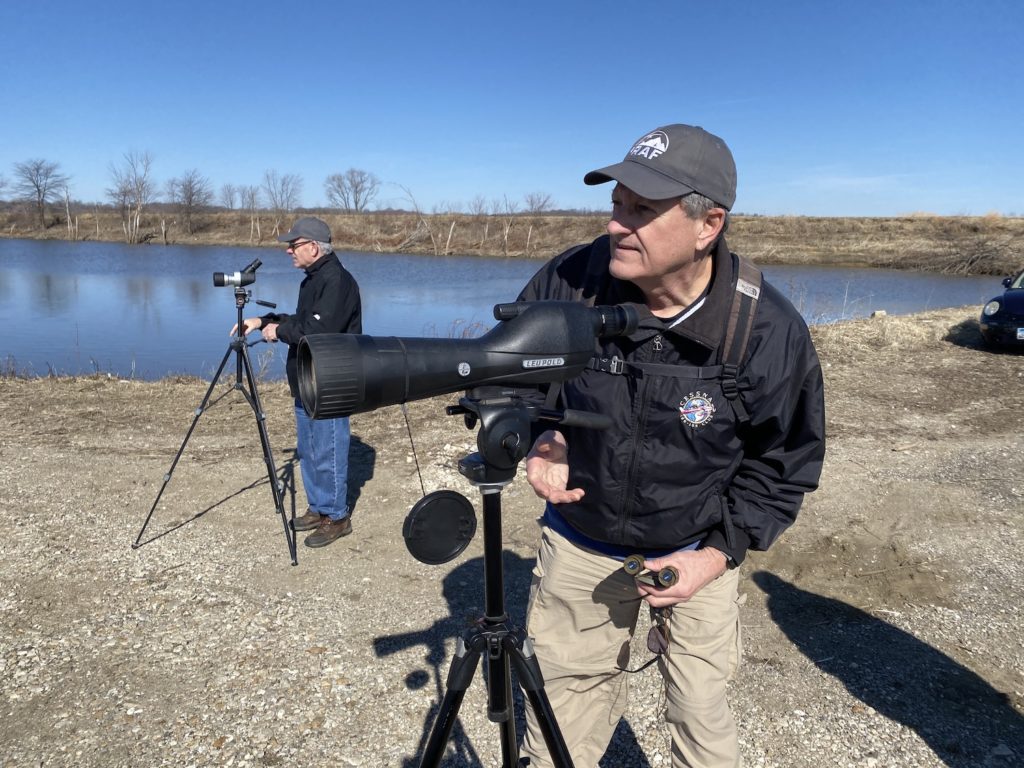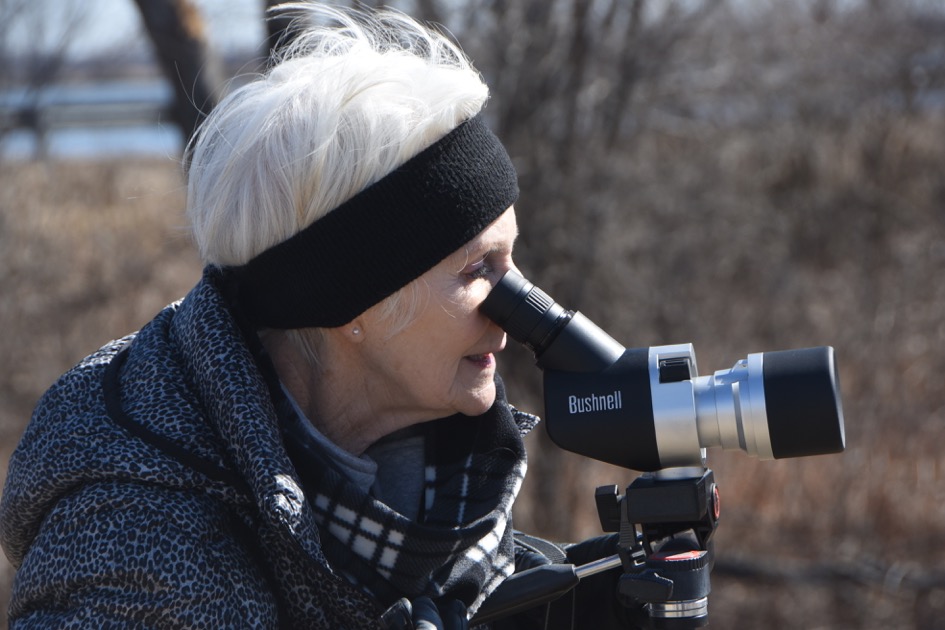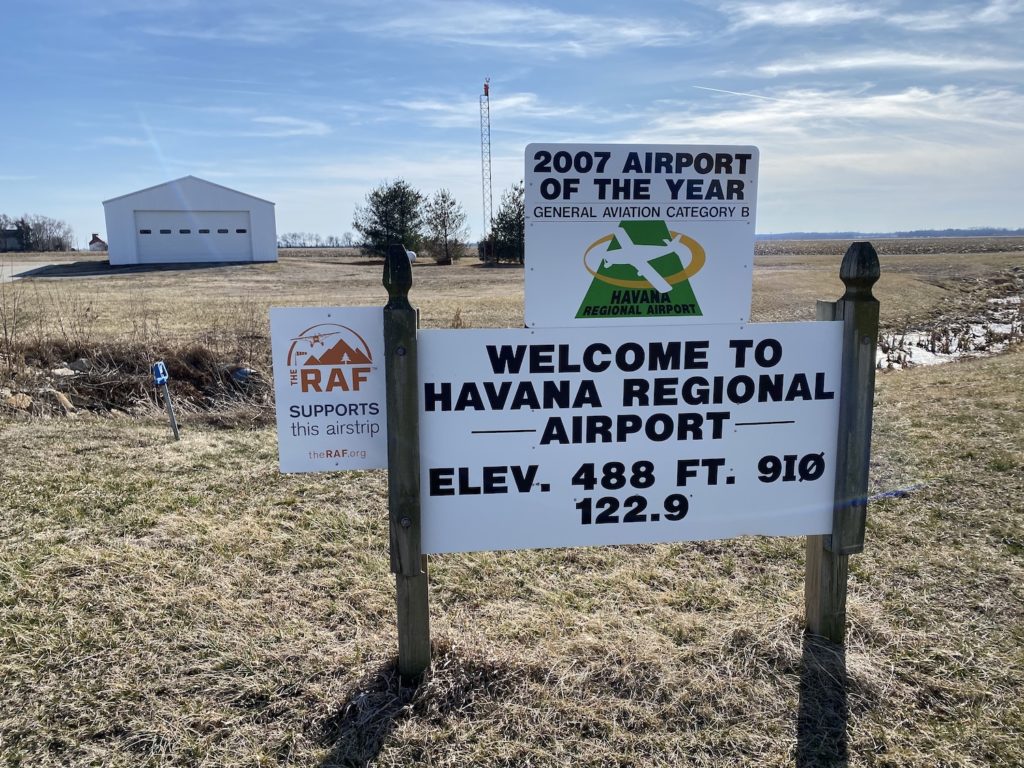MIGRATORY BIRD FLY-IN THRILLS VISITORS

– RAF Illinois Liaison Mike Purpura
Havana Regional (9I0) is a 2,200-ft turf airstrip situated on a sandy plain near the Illinois River and the Emiquon Wildlife Refuge, and on Saturday, March 7, Havana was again the site of this year’s Migratory Bird Fly-in. Recently, the RAF contributed grant money to upgrade its pilot shelter, adding a shower and restroom facility. The Port Authority has also helped make it one of the friendliest airports in Illinois. I have attended all three of these fly-ins and have never been disappointed in what I saw and learned. This year, seven pilots and their guests enjoyed a day of discovery on the Emiquon, and airport hospitality.
The weather was crisp and high pressure was settling as we enjoyed a wonderful breakfast of pancakes, sausage and real maple syrup. The wind was 170° at 15 knots and many of the birds, sensing the high pressure and wind out of the south, took off northbound for their all-night, migratory flight which would take them 200 miles closer to their breeding grounds around Hudson Bay. Some of the group expressed apprehension that we would miss the rest of the birds, so we were driven to the Emiquon with this thought in mind.
Arriving at our first stop, we were treated to the sight of Trumpeter Swans, ducks, and Snow Geese. Aaron Yetter, Director of the Forbes Wildlife Research Station, gave a running interpretation of what we were seeing. These birds are endlessly fascinating. Their ability to thrive, reproduce and fly thousands of miles, year after year, is truly an incredible adaptation. For thousands of years, these species have witnessed the coming and going of glaciers, forests, and wetlands.

What we saw next was truly amazing.
V-formations of birds streamed toward Thompson Lake from the northwest after foraging in farm fields. There were thousands of birds about 1,200 feet above the ground. Over the lake, the graceful V-formations disintegrated into a chaotic ball of birds seemingly slipping out of the sky with rapid left and right knife edge maneuvers. They were in a controlled fall toward the safety of the lake. A white raft of birds was forming, like an ice floe growing larger by the minute. A constant stream of birds, several miles long, fed this chaotic gaggle for over an hour. When the skies cleared, all anyone could see was a white raft of birds with the sound of their prehistoric calls reaching our ears.
Everyone enjoyed the experience. When we returned to the airport we were treated to a great meal of fried catfish, macaroni and cheese and baked beans. Next year we can count on the birds being there – I hope we can count on more pilots flying in to see them!

Submitted on March 12, 2020

Had a great time at the fly-in (though we drove it). Thank you for host this and for planning the excursions for birding and to the mounds. My husband’s cousin belongs to your group and suggested that we attend since we are birders. Loved it.
Thanks to everyone involved in organizing/planning this interesting event. I really enjoyed seeing all the Snow Geese streaming in to the lake and turning it white over that hour. The Eagles nest we were taken to was interesting as well with one Eagle poking it’s head out above it and eggs/chicks there likely as well.
The next stop on our tour was the Dickson Mounds State Museum where we learned a lot about the early inhabitants of the Illinois Valley area as well as the geology and how it changed over time to what we see there today. http://www.illinoisstatemuseum.org/
Thanks also to whoever planned the weather for the day as it was perfect flying weather!
Marc